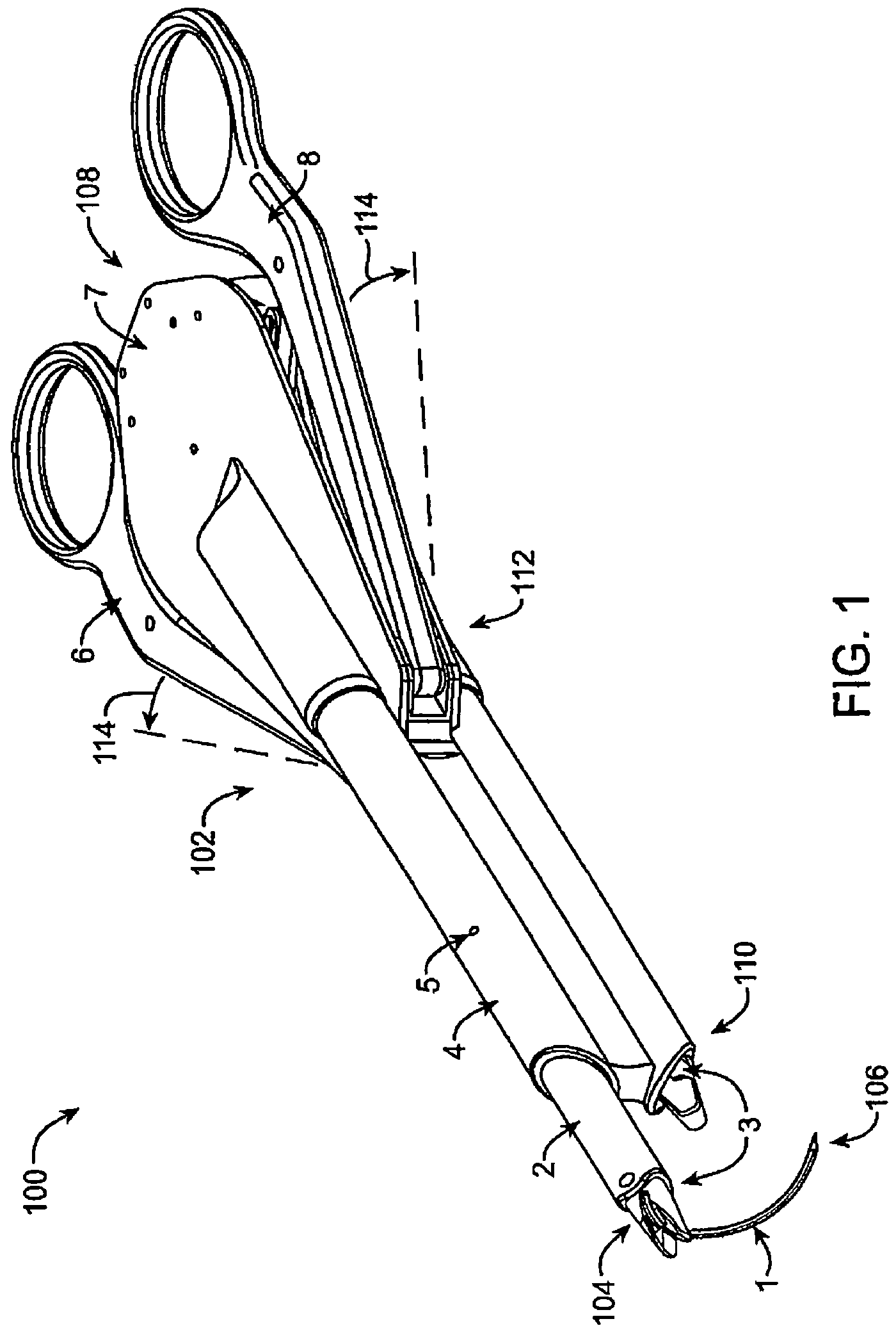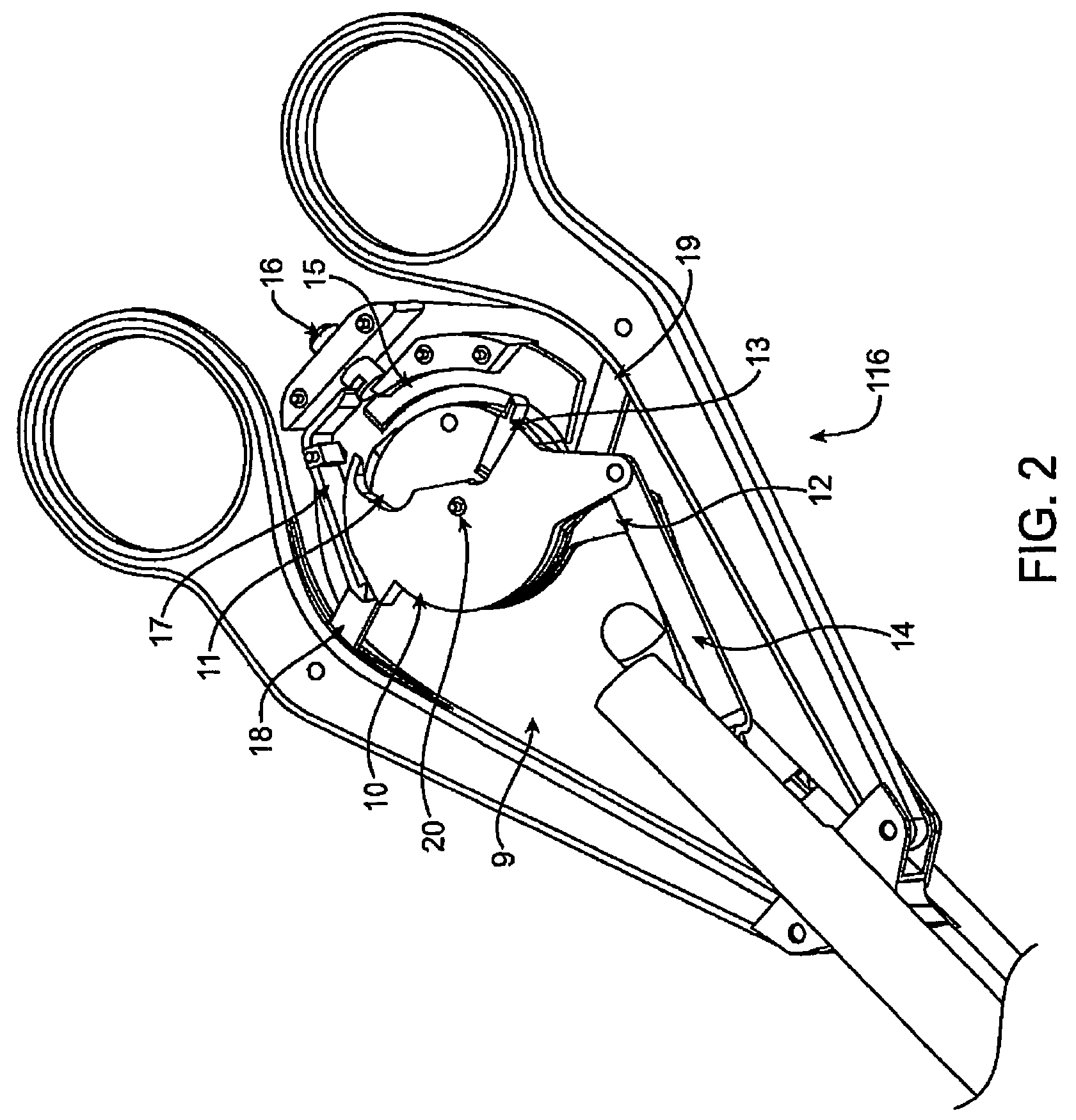Suturing device, system and method
a suture needle and suture technology, applied in the field of suturing devices, systems and methods, can solve the problems of difficult manipulation of suture needles, large number of suture stitches, and difficulty in placing suture needles, so as to improve speed and ease of use, precise control of needle movement and positioning of sutures
- Summary
- Abstract
- Description
- Claims
- Application Information
AI Technical Summary
Benefits of technology
Problems solved by technology
Method used
Image
Examples
Embodiment Construction
[0033]The present invention is generally directed to improved medical suturing devices, systems, and methods. Exemplary embodiments of the invention provide improved suturing devices and methods for suturing tissues that can significantly increase the speed and ease of suturing, particularly when suturing of long incisions or where large numbers of stitches are to be deployed.
[0034]The invention should find a wide variety of applications for stitching anatomical tissues in both humans and animals. Along with endoscopic operations (for example, in laparoscopy) these structures and methods may find use in other areas of surgery where tissues are to be stitched, providing particular advantages for stitching of large incisions by increasing the ease and speed with which each individual stitch may be placed, as well as facilitating and expediting the formation of knots in the suture. The suturing devices and associated methods described herein may, for example, be used suture a wide vari...
PUM
 Login to View More
Login to View More Abstract
Description
Claims
Application Information
 Login to View More
Login to View More - R&D
- Intellectual Property
- Life Sciences
- Materials
- Tech Scout
- Unparalleled Data Quality
- Higher Quality Content
- 60% Fewer Hallucinations
Browse by: Latest US Patents, China's latest patents, Technical Efficacy Thesaurus, Application Domain, Technology Topic, Popular Technical Reports.
© 2025 PatSnap. All rights reserved.Legal|Privacy policy|Modern Slavery Act Transparency Statement|Sitemap|About US| Contact US: help@patsnap.com



